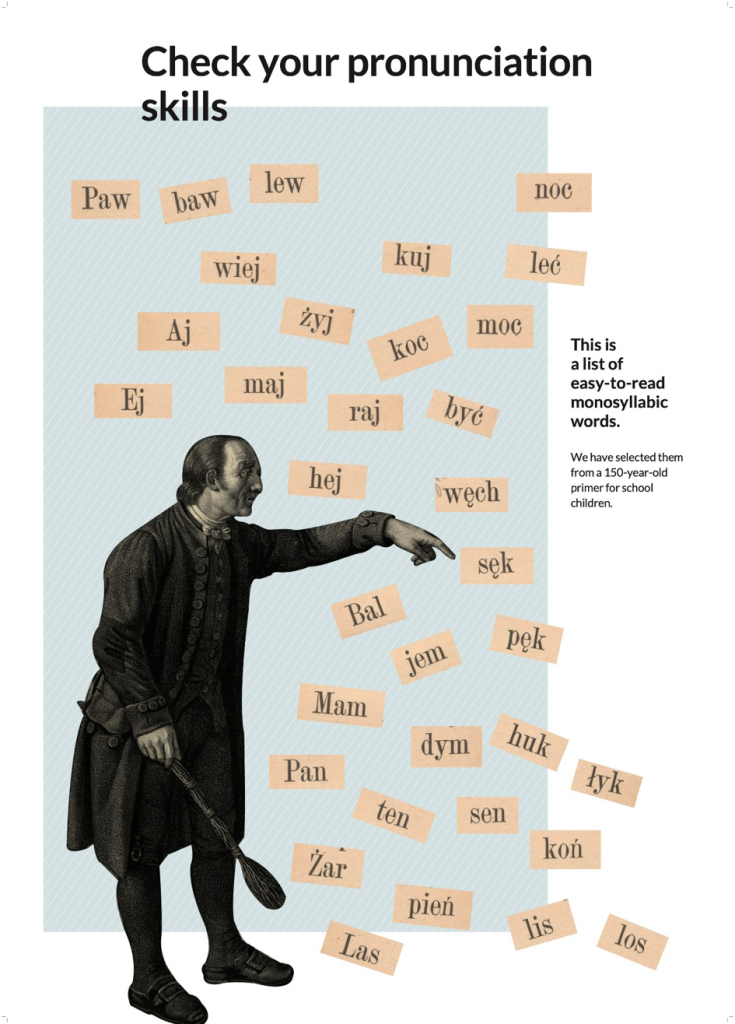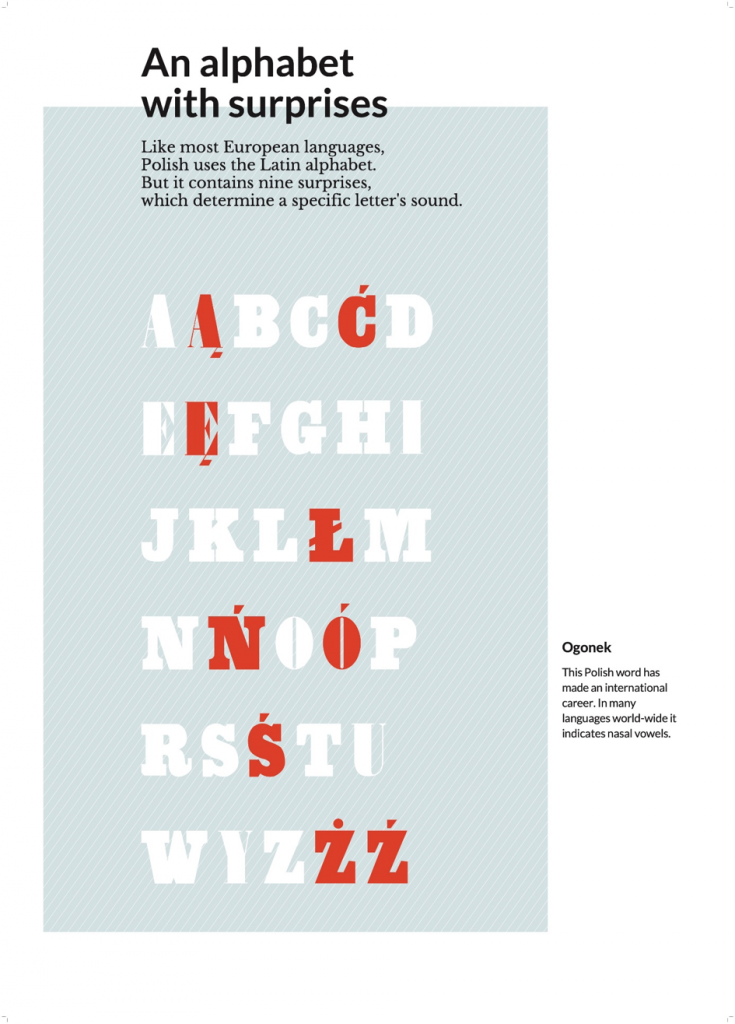The Polish Language
Polish is the second most spoken Slavic language in the world, with about 50 million active users and at least 10 million have a passive understanding of it. Thus, Polish is the largest Slavic language in the European Union and its fifth ethnic language (ex aequo with Spanish Castilian, following German, English, French and Italian).
Polish belongs to a subgroup of Indo-European languages called the West Slavic languages (other languages from this group include Czech, Slovak, Kashubian, Lower Sorbian, Upper Sorbian and the extinct Polabian).
It is estimated that the average Pole actively knows about 30,000 words, and passively understands about 100,000, but does not use them. According to some Polish language experts, it is enough to know 1200 most commonly used words to be able to speak Polish.
The Polish alphabet is based on the Latin alphabet and consists of 32 letters. There are nine letters created using diacritical signs (ą, ć, ę, ł, ń, ó, ś, ź, ż). In addition, the language also includes seven digraphs (sz, rz, cz, ch, dz, dż, dź) and one trigraph (dzi).
Polish uses declination, meaning that nouns, adjectives, adjectival participles, as well as substantive, adjective and numeral pronouns, and even numerals are declined in cases. Verbs, in turn, are conjugated by person, tense, mode, voice and number, as well as aspects.
The oldest sentence in Polish: “Day, ut ia pobrusa, a ti poziwai”, which could be roughly translated as “Let me, I shall grind, and you take a rest”, was written in the Latin alphabet in 1270 in Wrocław (in the Book of Henryków, which has been inscribed on the UNESCO World Remembrance list). In 1285 at the congress in Łęczyca, it was decided that Polish would be used next to Latin in monastery and cathedral schools.
Polish was influenced by Latin, Greek, German, Czech, Ruthenian, Turkish, French, Italian, Russian, Hungarian and Yiddish. Nowadays, its English – the lingua francaof our times – which has the biggest impact on the Polish language.
The main dialects of the Polish language are the variants spoken in Greater Poland, Lesser Poland, Silesia, Mazovia, Chełmno-Kociewie-Warmia, and the Northern and Southern Boarderland regions.
Learn more:
Multimedia Guide to Polish Language
Information on the Poland.plwebsite
Information about where you can learn Polish and information about Polish book collections on an interactive map of “Poland outside of Poland”
Popularization of Polish language abroad sectionof the Polish National Agency for Academic Exchange


